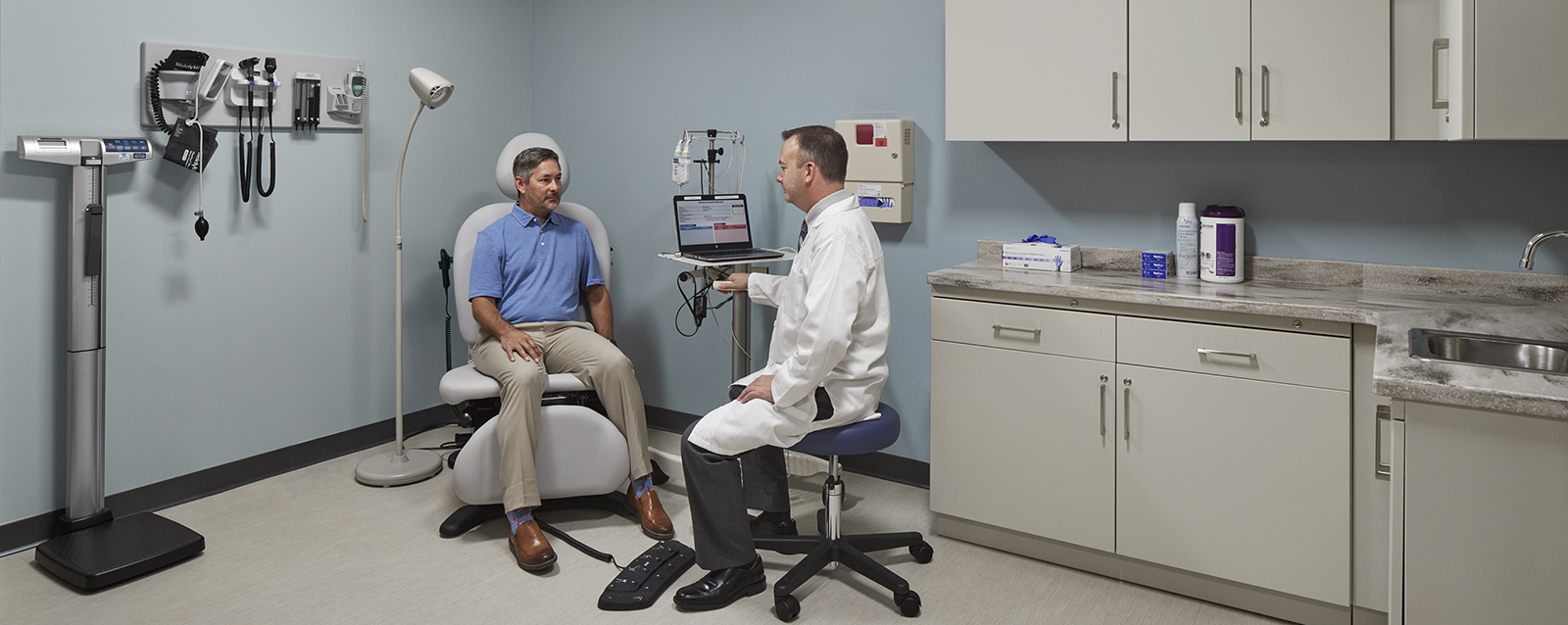Take 5 With Svigals + Partners’ Doug Lovegren
December 12th, 2023
12-15-23 | Here, he shares his thoughts on holistic healthcare, repurposing underutilized buildings as community health centers, and school-based clinics.
Holistic healthcare
One-stop healthcare facilities bring together a range of health services within a single location. It’s ultra-convenient for patients to meet with their primary care doctor, then cross the hall for related but separately provided radiology scans. These facilities are designed for convenience and comprehensive care for patients while promoting provider collaboration.
Today, the concept of holistic care goes one step further with more facilities strategically merging the treatment of comorbidities, such as methadone clinics alongside dental care and behavioral health treatment. Furthermore, our firm is currently renovating a soup kitchen where a local community healthcare provider will create a small clinic on the second floor, providing the food insecure easy access to both primary care and behavioral healthcare treatments.
Repurposing underutilized buildings as community health centers
The healthcare industry is increasingly seeking opportunities to deliver integrated healthcare in equitable ways. One successful strategy is revitalizing underutilized buildings into inviting, state-of-the-art health centers. This approach reduces waste associated with an existing structure’s demolition and the consumption of new construction’s resources, while helping reinvigorate communities and filling gaps in essential wellness services. Location is critical for wellness facilities’ ability to provide top-quality, affordable, and accessible healthcare services. So when a conveniently located, underutilized building presents itself, astute healthcare providers jump in. An example is the Cornell Scott Hill Health Center Clinic in West Haven, Conn., where we converted a former funeral home into an inviting and easily accessible community clinic with medical and dental offices, pediatric services, and behavioral health care under one roof.
Technical advancements
Technology is crucial in closing the health equity gap in some communities and rural America by improving the access and delivery of healthcare and empowering patients and providers. Telemedicine, for example, provides widespread access to quality healthcare services, and wearable devices and remote monitoring tools enable providers to track patients’ vital signs and health metrics remotely while enabling patients to monitor their own health. Additionally, community health online platforms simplify ongoing communication between doctor and patient. As a result, less physical space is needed for paper records and patient waiting rooms, while clinic design is starting to incorporate features such as telehealth rooms and LED lighting to support circadian rhythms that are integral to quality sleep and awake cycles, benefiting overall physical and mental health.
Engaging art and inviting design
Engaging art and inviting interior design are essential to healing environments that promote well-being and reduce stress. Warm woods and finishes and statement art are often featured in major hospital designs and are now also benefitting community health centers, including bright and inviting common areas, patient rooms, medical and administrative offices, and treatment rooms. Biophilic designs incorporate natural plants and light, as well as materials that connect patients with nature.
Art at community health centers often features local artists, making patients feel recognized and comfortable while also serving as a conversation starter, reducing patient anxiety. Local artwork can also acknowledge diverse backgrounds, with culturally sensitive designs that respect different beliefs and practices, contributing to a more inclusive environment.
School-based health centers
Today, traditional school nurse services are expanding in the form of school-based health centers (SBHC) located within or on the grounds of an educational institution. These centers are designed for a range of primary care and preventive health services for students, faculty, staff, and sometimes even the broader community.
SBHC environments provide various services, typically including primary care, nutritional health, mental health, substance abuse/prevention, dental care, reproductive health, and immunizations. They play a vital role in ensuring that students have access to necessary healthcare services, reducing health-related barriers to learning and helping to set them on an early path toward adopting healthy behaviors.

See the full Healthcare Design article here.
All photography by Robert Benson Photography









